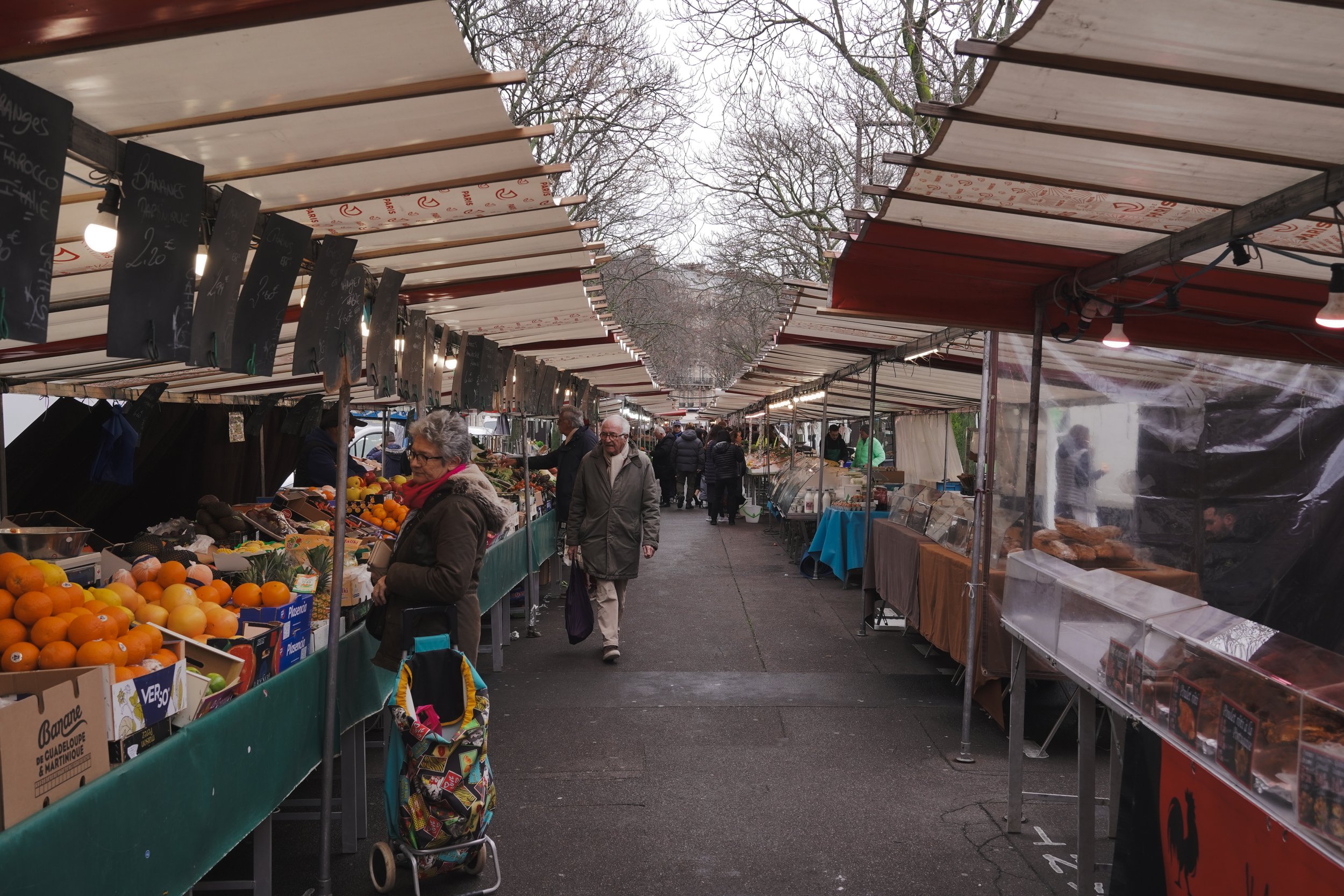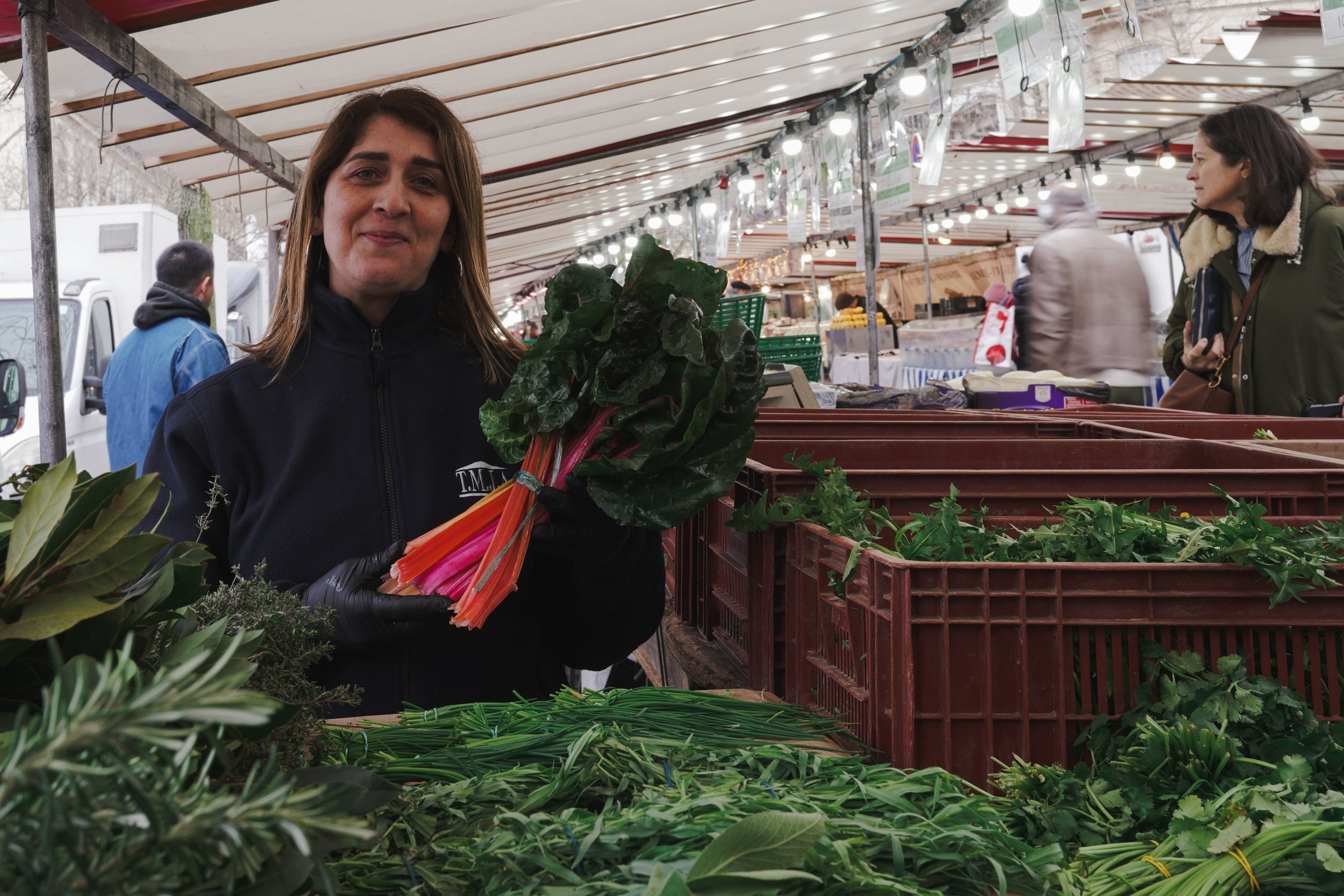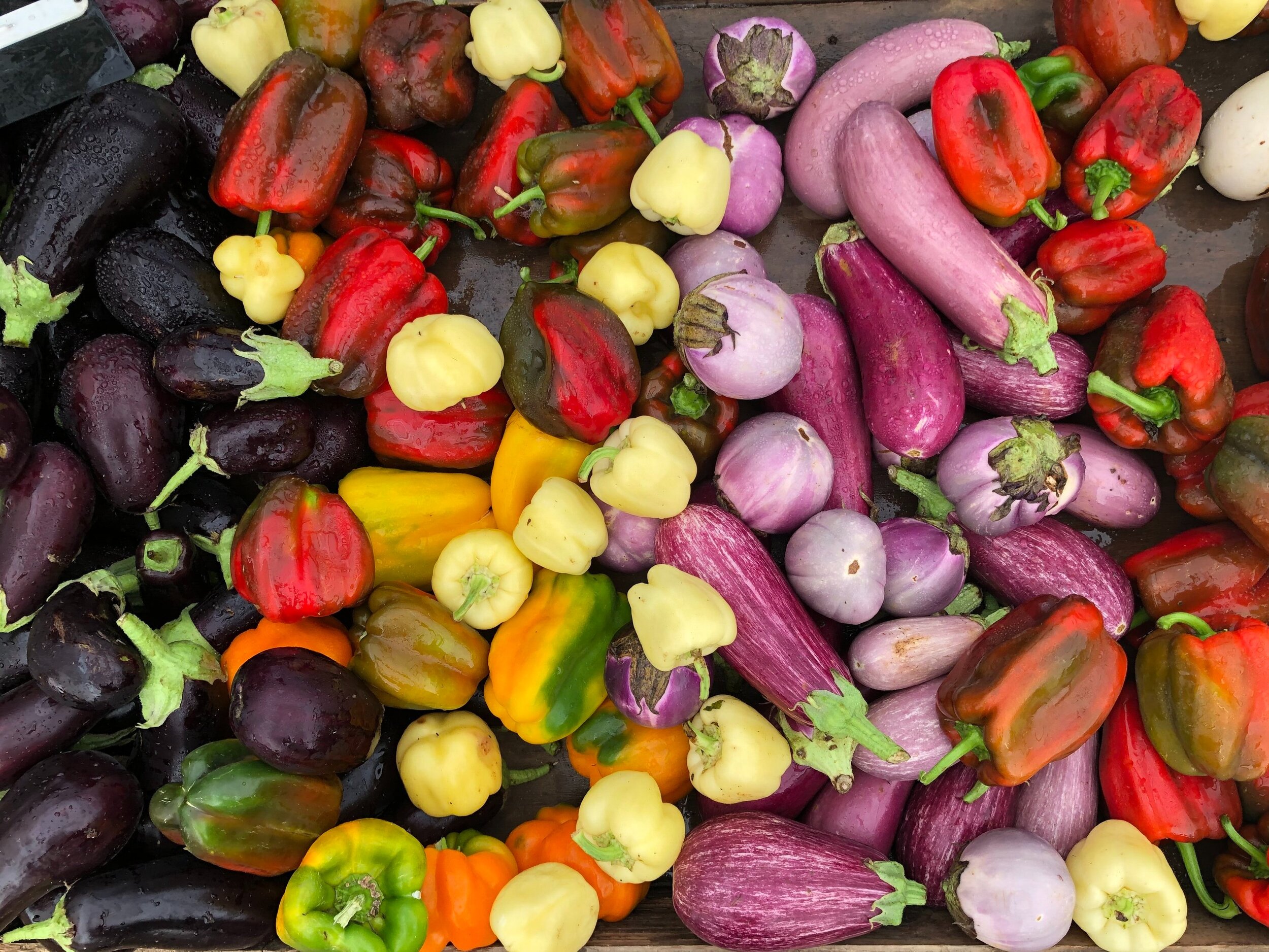It's clear that I haven't been able to establish a rhythm for my writing habit. We can debate whether I'm putting in enough effort, but after a certain age, when you change countries, many old and new habits take different durations to settle into a routine than you might expect. Especially, like me, if you come to a country with your spouse’s assignment without finding a job, and if you don't know the language at all, then your situation becomes even more challenging. It's essential to find activities that will become part of your new life and keep you disciplined. It could be something as simple as taking your child to and from school. This is very important to me; chatting with my daughter while going to and from school, witnessing her growth, is one of the most enjoyable ways. As she grows older, our walking time has decreased, but that's okay; every age has its pleasures. Next year, she'll be in sixth grade and will prefer going to school without her father. This means that I'll need to develop a new habit for mornings next year. It might be exaggerated, but wouldn't it be great if I started doing sports, right?!?!
My second routine in Paris became "going to the market." Except for school holidays, you can see me every Wednesday at Avenue President Wilson market. Located between Iéna Square and Alma Square on Avenue President Wilson, the market is held on Wednesdays and Saturdays, opening early in the morning and closing at 2:30 PM. Frankly, the variety of products on Saturdays is much better than Wednesdays; if you have the chance, I recommend going on Saturdays. I'm not saying this because I go there regularly, but among the markets I've seen while walking the streets of Paris, this is one of the best. One of the characteristics that make up the city's spirit is each neighborhood's own shopping streets and local markets. The Parisians' commitment to this culture is one of the most important factors for me to love this city. Watching an elderly Parisian with a grumpy look and a seller who you wouldn't believe enjoys his job sharing recipes with each other in a butcher's shop is a wonderful moment for me. So when the "home delivery in 15 minutes" initiative came to Paris, I told my friends it wouldn't work, and I was right. Especially in food shopping, reducing or cutting off the contact between seller and customer, like trying to change the culture of Parisians, is also not possible.
In the 20 arrondissements of Paris, 72 markets are set up. You can check where and on which days they are set up on the city's official website. To rent a space at the market, you need to obtain permission from the local municipalities. The process typically begins with the applicant applying to the relevant administrative authority, which evaluates the suitability of the vendor and the products they plan to sell. Among the key requirements are providing fresh and locally sourced products, offering a variety of items, keeping the stall clean and organized, and clearly displaying prices. Additionally, local authorities expect vendors to create a friendly and professional atmosphere by communicating with customers in a warm manner. Generally, the places where the products come from and the production methods (such as organic-bio) are indicated on the labels.
Seeing dried grapes, dried apricots, dried figs, and quinces coming from Turkey through the labels makes me very happy, indeed. Here, at one of these stalls, there's Azdine. I can say that I made my first attempts at speaking French with him at the market. He's so polite that he has been putting up with me for years. In addition to dried fruits from Turkey, his stall also offers many varieties of nuts, mezes, and the types of olives that I buy most frequently. In France, olive and olive oil consumption is significantly lower compared to Italy, Spain, and Greece. So finding olives that suit my taste is not easy either. Thanks to Azdine, he allows me to taste 2-3 varieties before deciding which olives to buy. He has been doing this job for 30 years. Azdine's attitude reminds me of the vendors in Yeşilköy market from my childhood. Always cheerful, always talkative, and always loud. The flower stall across from him is his favorite because the scents wafting from there especially in spring make him very happy. He says that chatting with customers is the most enjoyable part of his job, and indeed, in the small question-answer interviews I conducted, all the vendors mentioned that chatting with customers is their favorite part of their jobs.
Azdine was the last to reply to my e-mail so he deserves my “sympathy” (photo: Amber)
One of the most enjoyable conversations you can have is with Carine, right next to the Azdine’s stall. She has been at the helm of her own company, BaraPatates, since 2007. In my opinion, she's the queen of the market. The quality of the products on her stall is always top-notch, and she has a variety of mushrooms that you won't see at any other stall. Because she also loves cooking at home, she pays great attention to ensuring that the products on her stall are as high-quality as those she brings home. She doesn't put any product on the stall that she doesn't like. This attention to detail and pursuit of good ingredients is a tradition passed down in her family because Carine's family has both a catering company and butchers. Now she's passing this tradition on to her children. One of my favorite moments at the market is when Carine shares recipes with a very chic Parisian woman. I know, this might get me into trouble in the future because when I improve my French to that point, Carine won't want to see me around her stall anymore because I'll be trying to ask for a new recipe every time. One of the things market vendors dislike doing the most is carrying crates, and Carine thinks the same way, rightfully so, she even had to undergo shoulder surgery because of it.
Kneel before the queen of mushrooms ! (Photo: Amber)
Another market vendor who doesn't particularly enjoy the setup stage is Herminia 'Mimi' Pereira at the Saint Vrain cheese stall opposite Bar a Patates. Setting up Mimi's stall is more challenging. The care needed to transport cheese and other dairy products is different from that needed for potatoes and onions, of course, so preparing the stall requires a serious level of concentration and patience. Once that's taken care of, the job becomes easier. Mimi's favorite moments in her job are when customers are told to her how satisfied with the products they purchase. I recommend visiting the Saint Vrain stall especially on Saturday mornings; the variety of cheeses there can be overwhelming. Lastly, let me tell you why Mimi and I get along so well: Both Mimi and I love comté cheese the most among all the cheeses. Actually, this isn't all that rare because it's really hard not to love comté. It's made from unpasteurized cow's milk in the France-Comté region near the Swiss border in eastern France. It's one of the most produced cheeses in France, and its production process undergoes strict controls, including calculating how many cows can be on how many square meters of land. These standards are referred to as French Appellation d'origine Contrôlée (AOC). By the way, Comté pairs beautifully with the white wines of the Arbois appellation in the Jura region. You should try it when you come to Paris.
note for the smart-a.. ; we are aware that the cheese is not comté but we like this photo the most.
(photo: Amber)
Talking about white wine immediately brings fish to mind. I confess, I never used to buy fish from the market in Turkey, so I didn't buy it here in the early days either. Then I put an end to this nonsense and started buying it. After making a few changes to the stalls over the years, I've been benefiting from Jean Pierre's 40 years of experience for the last 2 years, and I started buying fresh fish and seafood from his stall. His advice on how to cook them has improved the quality of our fish dinners at home. Jean's advice is very accurate because he cooks at home. Of course, Jean's least favorite thing about the market is the cold weather. The reason he complains more than other vendors is actually quite clear: in winter, having to clean fish with hands exposed to water! He's not entirely wrong, don't you think?
gratter & vider ; the first 2 French words i learned for fish shopping. (photo: Amber)
When Jean wants to buy something from the market, of course, he prefers vendors who bring organic products from their own gardens. One of these stalls is ValdemarBerreira's. They grow their products on lands 40 minutes outside Paris. You should see the variety of herbs in spring; they are incredibly colorful and fragrant, and towards the end of summer, they have various types of tomatoes. Valdemar took over this business from Joël Thiébault, who was famous as a supplier for starred restaurants, in 2016. His wife, Zilda, also joined the team. Like her colleagues, Zilda doesn't like the cold of winter or the "canicule" (heatwave) of summer. Since such good products pass through her hands, she uses them all in her own kitchen, and she can't resist sharing them with her customers if the new recipes she tries turn out successful. As a customer, what more could you ask for? Good ingredients and recipes; it's hard not to love this stall!
Zilda & greens (photo: Amber)
We've got the vegetables, fish, cheeses, and nuts; but where will we get the fruits? I'll answer right away; fresh fruits await you at Mourad's stall. Especially if you love berry varieties, they're always very fresh here. I can say that my daughter's obsession with Fuji red apples started because of this stall. I always have the opportunity to taste whatever fruit I want, just like I'm used to from Turkey. I'm always offered the fruit I want according to the season; this warmth and sincerity are the behavior I value most. Mourad might be the youngest person at all the stalls I shop at, both in terms of age and work experience: It's only been 10 years. I was there at 7 of it Mourad! He can't cook at home, but learning to cook is among his future plans because the products he sells put pressure on him. He says it doesn't seem possible to stay away from the kitchen when such good products pass through his hands, well, go ahead Mourad !
She knows why that apple is there. (photo: Amber)
Finally, let me tell you about the stall that makes me the happiest when I see it at the market. It's the stall of İbrahim and his family, meticulously making “gözleme” in their pristine white outfits. The only downside here is that they can't come on Saturdays because they set up their stall at the Versailles market on Fridays and Sundays. İbrahim also cooks at home because it's part of his family's traditions. They have different varieties of “gözleme” at their stall. My favorite is the one with baby spinach and feta cheese. They make sure all the ingredients they choose are additive-free. Therefore, the taste is equally excellent. We can't enjoy many good Turkish meals outside our home in Paris, but İbrahim and his family's varieties of "gözleme" delight us.
İbrahim’s flour toss. (Of course, he doesn’t do anything like this, it was just my absurd idea.) photo: Amber
Among the regular customers of this market, there are also famous chefs. During my Wednesday routine, I sometimes come across Matthias Marc and Takuya Watanabe. Of course, even though I feel excited to be buying ingredients from the same place as them, the lack of any similarity of the final dishes between what we cook at home and what they cook brings me back to reality. 😃
























